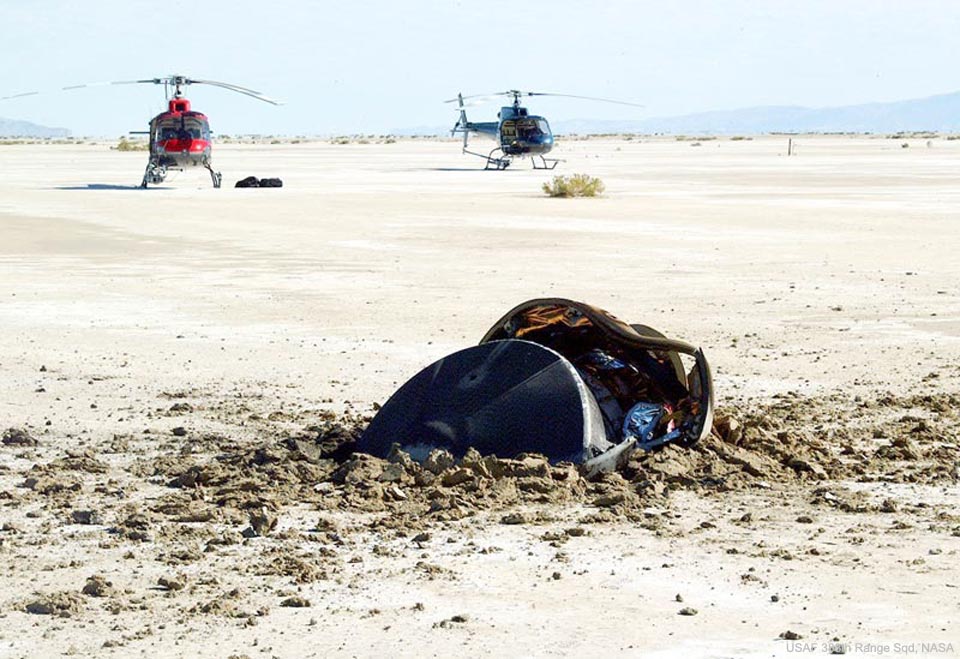2022年11月13日
Flying Saucer Crash Lands in Utah Desert
Image Credit: USAF 388th Range Sqd., Genesis Mission, NASA
Explanation: A flying saucer from outer space crash-landed in the Utah desert after being tracked by radar and chased by helicopters. The year was 2004, and no space aliens were involved. The saucer, pictured here, was the Genesis sample return capsule, part of a human-made robot Genesis spaceship launched in 2001 by NASA itself to study the Sun. The unexpectedly hard landing at over 300 kilometers per hour occurred because the parachutes did not open as planned. The Genesis mission had been orbiting the Sun collecting solar wind particles that are usually deflected away by Earth’s magnetic field. Despite the crash landing, many return samples remained in good enough condition to analyze. So far, Genesis-related discoveries include new details about the composition of the Sun and how the abundance of some types of elements differ across the Solar System. These results have provided intriguing clues into details of how the Sun and planets formed billions of years ago.
Tomorrow’s picture: sky wizard
坠毁在犹他州沙漠的飞碟
图像提供: SAF 388th Range Sqd., Genesis Mission, NASA
说明: 一艘来自外太空的飞碟,在经历雷达锁定追踪和直升机追逐后,坠毁在美国犹他州的沙漠里。不过,这个发生在2004年的事件,其实上和外星人无关。这幅图像中的飞碟,是创世纪任务的样品回送舱,它是2001年美国航空航天局发射用来探索太阳的创世纪号无人探测船之一部分。这次以每小时300公里速率冲撞地表的硬着陆,其实全属意外,因为降落伞并未如期打开。创世纪号的任务是绕行太阳,并收集通常会被地球磁场弹开的太阳风粒子。虽然经历高速撞击,不过许多回送的样品状况仍然良好可供分析。截自目前为止,与创世纪号相关的发现,包括定出更细致的太阳化学成分,以及某些元素在太阳系各处丰度的差异。这些成果提供了很有趣的线索,可用来建构太阳和行星在数十亿年前形成的细节。
明日的图片: sky wizard







